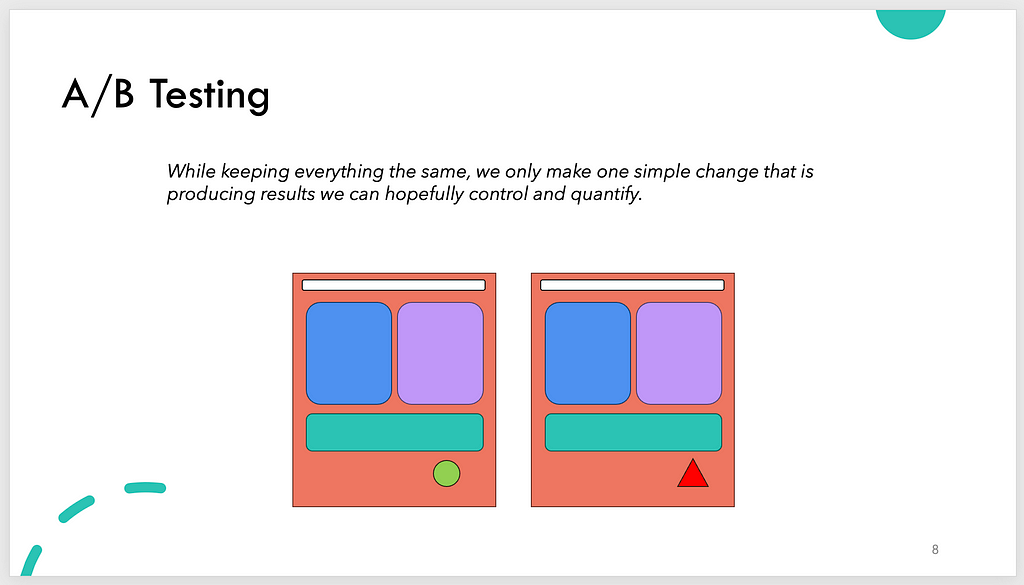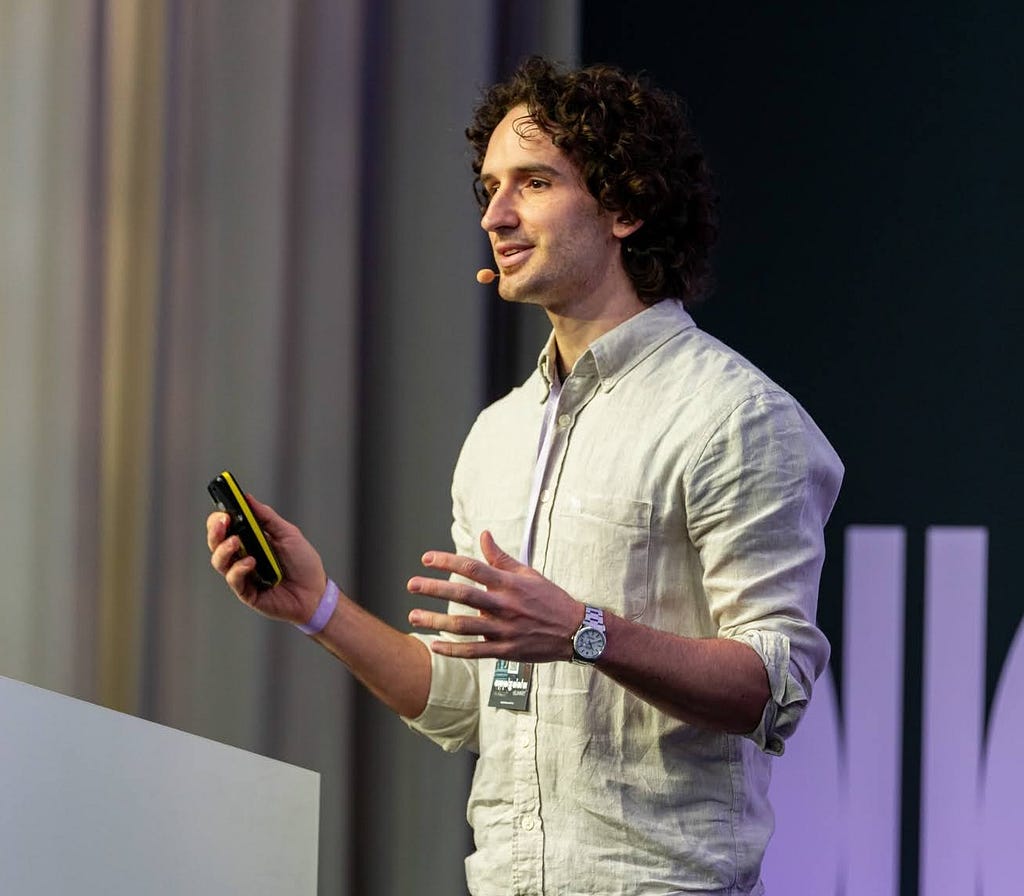
In this article, I’d like to share my experiences and learnings as a public speaker in the field of data science. Starting with small local meetups and eventually progressing to larger events, my journey has been filled with valuable insights. I hope to offer guidance and share what I’ve learned with anyone ready to contribute their knowledge to the community.

During my career as a Data Scientist, I’ve attended many conferences and meetups. When I started my job, many were struggling to understand what Data Science was and how to leverage the growing cloud computing solutions. It always felt like a jungle!
That’s why connecting with the data community through meetups and other local events became essential for me. At some point, someone invited me to present a project I was working on. It was then I realized how much I enjoy sharing and explaining my work!
Since then, I’ve had the pleasure of speaking at various conferences, including ODSC, PyCon, and Data Innovation Summit, among others. Each time I’m asked:
“How do you find the right story for a conference?”
“Aren’t you scared of making mistakes while presenting something technical?”
These questions, among others I’ve received, made me realize it’s time to share what I’ve learned over the years and, hopefully, inspire new data experts to share their knowledge.
Why do we need Data Speakers?
Data is tough! Companies often don’t really know what they’re looking for, pushing data enthusiasts to find solutions for problems that sometimes just can’t be solved. Now, imagine how helpful it would be to connect with someone facing the same challenges, who might offer the very answer you’ve been seeking. Or perhaps simply someone you can relate to, where you can share and delve deeply into the work you’re doing.
This is precisely why we need skilled communicators in our field. I still vividly recall when this amazing Data Engineer shared how he resolved a deployment issue with AWS Lambda during his presentation. This issue had been a challenge for me for several weeks.
On another note, listening to someone present a use case can be enlightening. It’s a way to discover certain solutions and understand how they can be applied. Moreover, if you’re truly passionate about your work, presenting your ideas and opening them up for discussion can be immensely enjoyable. It’s an opportunity to receive feedback from a diverse array of people.
I also hold the conviction that in a world where AI, such as applied Large Language Models (LLMs), has significantly advanced, there’s an increasing need for enhanced communication. This is crucial to explain the layers of complexity that exist between us and the technologies that have become part of our lives.
I don’t have anything to say

Sadly, this is a sentiment I often encounter. To me, it always echoes like:
“I don’t have the right to speak because I don’t have anything to say.”
But this couldn’t be further from the truth. There’s always something to say, especially when you’re immersed in the world of data every day. You’re surrounded by stories and challenges that defy simple, deterministic solutions. To me, that’s the perfect starting point for something extraordinary!
We sometimes overlook the significance of our work, merely because it’s part of our daily conversations. We discuss it with our boss, colleagues, and forget that outside our bubble, many companies and individuals are still navigating the basics of data and AI. For example, I know many who aren’t familiar with ChatGPT, despite its growing popularity. Take your insights beyond your immediate circle, and you’ll realize how vast your audience truly is!
Lastly, if you work in data, you are inherently a storyteller. It’s impossible to work in this field without transforming complex contexts into more digestible narratives. You might be doing it subconsciously, but you’re definitely doing it.
Presentation as a Product: Tips and Tricks
Consider crafting your presentation as you would any other product. Its value is crucial; without it, the presentation might not be worthwhile.
To elaborate, presenting to a conference is a collaborative effort involving the audience, the speaker, and the organizers. If your presentation doesn’t add value for these three key groups, it’s wise to step back and reassess its purpose.
I believe that a compelling talk begins with addressing a specific need. It could be something you’ve dedicated months to, leading to a realization that it’s worth sharing. Whether it’s about your successful solutions or your failures (and the lessons learned), it should stem from your personal expertise and diligent effort.
Before diving into some tips for crafting your presentation, let’s address what I believe is the elephant in the room:
Aim to be a Data Advocate, not a Data Guru.
I observe that the world is brimming with ‘gurus’ but has only a handful of true experts. When you think about taking the stage, view it as a platform for sharing knowledge rather than as a destination or a crowning achievement. The term “Guru” isn’t inherently negative, but in this context, I want to emphasize the distinction I’m making.
Find the Topic
When deciding on the topic for my next presentation, I begin with three basic yet essential questions:
- What project am I currently immersed in?
- What challenges have I recently faced in this work?
- Will sharing this information be beneficial to others?
These questions are my starting point for pinpointing the ideal subject. The following step involves researching who else is discussing similar topics, through various channels like publications, talks, or Medium articles. This stage is vital as it requires a thorough understanding of current trends and developments, ensuring that my contribution stands out in some unique way.
Take, for instance, a Medium article I wrote a few years back. I wasn’t introducing something brand new; instead, the innovation lay in how I combined existing technologies to overcome a specific challenge. This experience then became the focus of a talk I gave to a local Python community in Hamburg.
Craft your Slides Deck

I firmly subscribe to the philosophy that “less text is better”, and I remain open to contrary views, though I’m quite steadfast in my belief! Instead of relying heavily on text, I suggest using visuals that succinctly explain your algorithm or employing brief bullet points as your guide. When presenting to an audience that may not be as deeply immersed in the subject as you are and has likely sat through other presentations, overloading them with text can be counterproductive. The result? A disengaged audience and the feeling that your message isn’t getting through. Just picture enduring a 30-minute presentation under such conditions!
Maintain a minimalistic approach with your presentation slides, showcasing only the crucial elements that complement your talk. Understand that it’s impossible to cover every detail. Instead, provide a few links to your work for those in the audience who wish to explore the topic further.
Remember to acknowledge the work of others in your presentation. It’s important to give credit for original content, as this isn’t about competition. By recognizing the contributions of others, you significantly elevate the quality of your presentation, demonstrating a thorough understanding of the subject matter.
Explain like no one knows what you’re talking about
This is your moment to truly stand out, after all the effort you’ve put into your subject! Aim to captivate everyone’s attention. Ensure the experts in the room are pleased to hear about familiar topics, while those less knowledgeable feel included and able to grasp your points. Be observant of your audience; gauge whether they are keeping up with you. If time allows, lighten the mood with a joke to ease both your nerves and theirs. Engage your audience directly by asking a few questions during your talk to maintain high levels of attention.
I view this as a strategic game where you must actively prevent the audience’s attention from waning. Incorporate as many additional details as possible to help the audience connect with you and the problem you tackled. This might include some background on your company or what methods were used before your solution came into play.
That’s why we call it Story Telling and not Data Telling.
Ultimately, the question arises: should you script your speech and commit it to memory? In my view, that’s a matter of personal preference. Personally, I tend not to. This is mainly because I prefer to let the flow of ideas guide my presentation, allowing me to spontaneously include thoughts I might not have initially considered. This approach, largely driven through experience, makes the whole process much more enjoyable, in my opinion.
Final Thoughts

While for some, the scary aspect might be standing on stage, for me, the real battle was against imposter syndrome. This feeling seems to be a common thread among data scientists. Hence, stepping out to talk about a project that’s somewhat nebulous or didn’t quite work out as expected can be quite challenging. Thankfully, I overcame my apprehensions, and thanks to numerous incredible speakers I’ve encountered along my journey, I’ve been able to look back at my achievements and recognize that many are indeed worth sharing.
So, break out of your bubble and find the stage that suits you best. Whether it’s a topic in Data Science or a Data Engineering use case, gather all your insights, step out, and share them with the world.
If you are in need of support or want to connect, feel free to reach out: https://www.aromano.dev/
The Data Speaker’s Blueprint: Turning Analytics into Applause was originally published in Towards Data Science on Medium, where people are continuing the conversation by highlighting and responding to this story.
Originally appeared here:
The Data Speaker’s Blueprint: Turning Analytics into Applause
Go Here to Read this Fast! The Data Speaker’s Blueprint: Turning Analytics into Applause
